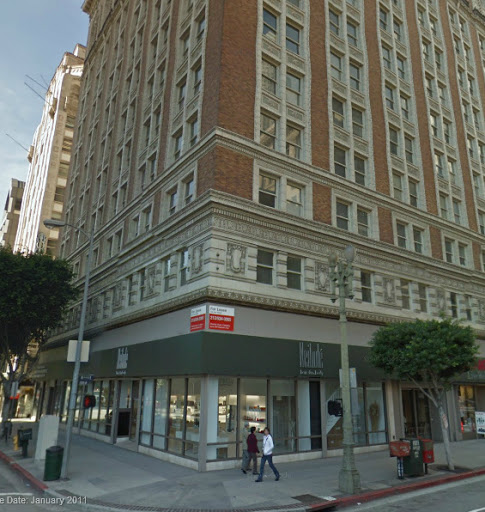Quote:
Originally Posted by GaylordWilshire

 LAPL LAPL
It looks like Continental took over the space by the '70s--I don't know if it was responsible for taking out the incredible Western design, but, if so, for the crime, its name deserves its recent eclipse by United. According to city directories, the 6th & Olive intersection was airline office central--CTOs (CTO is airlinese for "City Ticket Office," apparently) and sales offices. e_r and FFF: AMAZING interiors of the Western CTO. And Scott--still looking at all of your Union station pics. As someone said, it it great to see these private pics. We have all seen so many of what have now become the standard pics of L.A., from libraries etc, but these kind from private albums with people in them really add the third dimension.
A few more shots of the SW corner of 6th and Olive:
 
1927: USCDL; 1939: LAPL
Noticing the 1939 date on the second shot--when was the Western office done?
The corner today: beauty products
 GoogleSV |
H. Roy Kelley was the architect for both of these locations. I have seen a bound volume of these Maynard Parker photographs, with a lovely brown suede cover, in H. Roy Kelley's archives at UCSB. According to Kelley's own notes, the downtown location was at 6th and Grand (though you have found that 6th and Olive is more accurate), and he indicates that they were created ca. 1945. His dates as he recalled them in the 1980s isn't always accurate, but I don't feel like these were done in 1938, they do seem later. And Western Air Lines didn't get that name until 1941. It was known as Western Air Express prior to that.
Maynard Parker photographed the offices for
Architectural Forum, May 1946, so they more than likely were constructed ca. 1945.
There is mention of Kelley doing the redesign of the Western Air Lines office in Beverly Hills, at Wilshire and Canon, in June of 1946.
The glass is at such odd angles because Kelley thought that the view of the marvelous ticket office interior would be the airline's best advertisement, and because conventional glass would have distracting reflections, he angled the glass to avoid those reflections.
I think H. Roy Kelley was one of the finest Southern California architects, and is sadly forgotten today, for the most part. He was very innovative and versatile.



